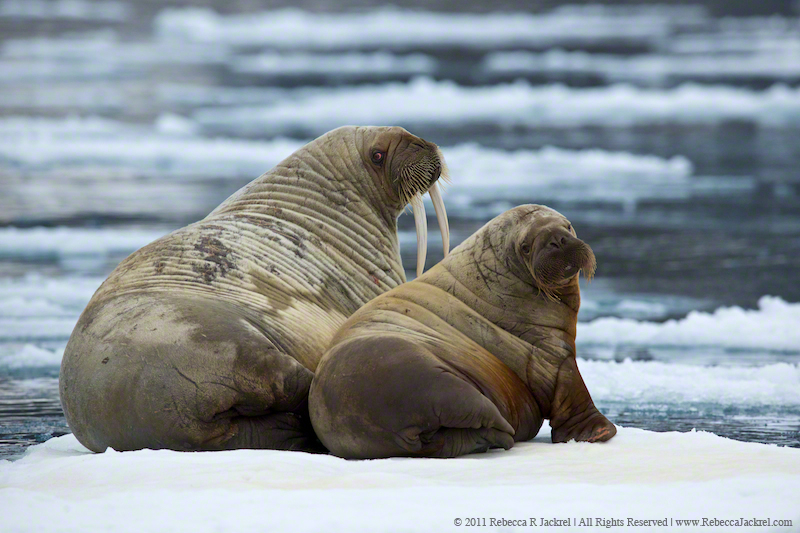Reproduction
Even though walruses live in aquatic environments, they fit into
the classification of mammals.
Therefore, walruses reproduce via sexual reproduction.
The mating season for the walrus spans from February to April
(Garlich-Miller 1999). During this time period, females who are
ready to mate break away from the rest of the walruses
(Garlich-Miller 1999).
A female’s readiness to mate is determined by whether or
not she is in a physical stage called estrus.
During estrus, the female walruses have high hormonal
levels and also gain more weight, both in order to make
fertilization more likely to occur, and to be physically
 ready
to become pregnant (Walrus
Reproduction 2013).
The females then join the males in the water and begin to
swim with one another.
Eventually, they will mate in the water.
Occasionally, the walruses will mate on land, but most of
the time mating occurs in the water (Svalbard 2003).
ready
to become pregnant (Walrus
Reproduction 2013).
The females then join the males in the water and begin to
swim with one another.
Eventually, they will mate in the water.
Occasionally, the walruses will mate on land, but most of
the time mating occurs in the water (Svalbard 2003).
Walruses have various behaviors of reproduction, depending on
whether they are male or female.
Every mating season, the female will mate with only one male.
However, the male walrus will possibly mate with a number of
females (Svalbard). The
males also become increasingly aggressive during this time.
They will often use their tusks to fight other males in order
to establish their claim on a female.
They male walruses will also make a screeching noise in order
to ward off other males and to attract various females (Walrus
Reproduction 2013).
The males will also become very aggressive during this time, both
with other males and with the females they are mating with.
Finally, the males and females will also consume a smaller
amount of food during this time in order to exert more energy into
the mating process (Walrus
Reproduction 2013).
The walruses also have an obscured pattern in the time when they
begin their reproduction cycles.
For example, Males don't start reproducing until they are 15
years of age, even though they mature at age 8. On the same token,
females start mating at age 10, even though they are done maturing
at age 6 (Walrus Reproduction
2013). Males will mate with multiple females in one mating season,
while females only mate approximately every two years. This results
in walruses having the lowest reproduction rate of all the
pinnipeds. 
After the female gives birth, around April or May, the calf makes
its way from the land or ice into the water. These calves tend to
weigh anywhere between 100 to 170 pounds (Svalbard 2013).
The babies are born with their moustache, but not their
tusks. This is because
the tusks will form at a later time as the walrus becomes more
sexually mature. The
newborn calves are able to swim and dive for food within minutes of
their birth (Svalbard 2013).
This is because the mothers tend to stay with their young and
continue to watch over, teach, and protect them.
Finally, the calves often become strong fairly quickly
because of the outstanding amount of nutrients in the mother’s milk.
The mothers produce very rich milk which contains a large
amount of fat (Svalbard 2013).
This will increase the calf’s fitness and will gives it a
better chance at maturing and continuing the reproductive cycle with
its own mate.
You now know how they reproduce. Lets see how they are able to do what they do in, form and function.